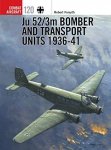-
Załączniki bezpieczeństwa
Załczniki do produktuZałączniki dotyczące bezpieczeństwa produktu zawierają informacje o opakowaniu produktu i mogą dostarczać kluczowych informacji dotyczących bezpieczeństwa konkretnego produktu
-
Informacje o producencie
Informacje o producencieInformacje dotyczące produktu obejmują adres i powiązane dane producenta produktu.Osprey Publishing
-
Osoba odpowiedzialna w UE
Osoba odpowiedzialna w UEPodmiot gospodarczy z siedzibą w UE zapewniający zgodność produktu z wymaganymi przepisami.
Studies of air combat in the Vietnam War inevitably focus on the MiG-killing fighter engagements, B-52 onslaughts or tactical strikes on the Hanoi region. However, underlying all these was the secretive 'electron war' in which highly-skilled electronic warfare officers duelled with Soviet and North Vietnamese radar operators in the attempt to enable US strike forces to reach their targets with minimal losses. Orbiting at the edge of heavily-defended territory, the vulnerable EB-66s identified and jammed the enemy's radar frequencies with electronic emissions and chaff to protect the American bombers. Their hazardous missions resulted in six combat losses, four of them to SA-2 missiles and one to a MiG-21, and they became prime targets for North Vietnamese defences when their importance was realised.
This illustrated study focuses on the oft-overlooked B-66 series, examining their vital contributions to the Vietnam War and the bravery of those who operated them in some of the most challenging situations imaginable. Author Peter E. Davies also explores how the technology and tactics devised during the period made possible the development of the EF-111A Raven, an invaluable component of the Desert Storm combat scenario over Iraq and Kuwait in 1991, and the US Navy's EA-6B Prowler, which entered service towards the end of the Vietnam War.








